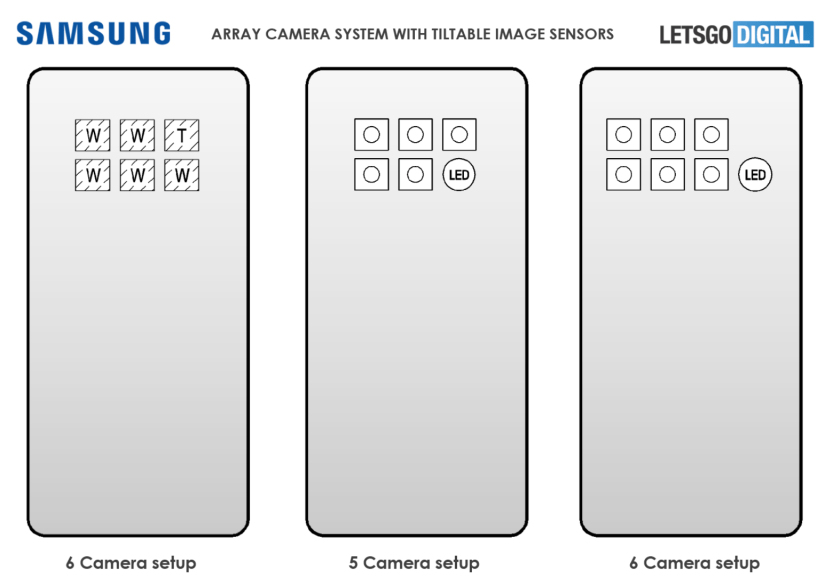- A patent filing has been published that purports to show a new Samsung phone with a much-improved camera setup.
- The idea shown in this patent is to bring a six-camera array (including five wide-angle lenses and a zoom camera) possibly to a new Samsung Galaxy phone.
- The patent documentation was published late last week.
It’s always fascinating to watch how Samsung continues to push its camera technology forward in new releases of its Galaxy smartphones, as it continues to do with each generation. For example, the South Korea-based tech giant is getting closer to the holy grail of smartphone design — the placement of a camera underneath a phone display to eliminate the need for a notch or a hole-punch selfie camera. Also on the camera front, meanwhile, the company has just patented a design for a new phone that sports a six-fold camera setup, which includes five wide-angle cameras and one zoom camera.
Samsung applied for this patent from the World Intellectual Property Office back in December, and the 55-page documentation for the patent was published late last week.
Dutch tech news blog LetsGoDigital spotted the filing, which is perhaps more interesting for the fact that Samsung’s idea here relies on moveable/tilting camera sensors, and not just on the basis of the number of sensors that are included.
As envisioned, this new Samsung phone calls for five wide-angle cameras with a focal length of 28mm, along with at least one telephoto lens. Per LetsGoDigital, an LED flash supplements the camera array, and each sensor can also point in one direction “and then optimize the array configuration using image algorithms.”


Why is this interesting? Well, by using moveable camera sensors you can do things like capture a panoramic image with a blurred or “bokeh” effect, which is something you can’t do with current Samsung phones. The Dutch site goes on to note that the benefits of this setup include better photos even in poor light situations, as well as superb focus, and higher dynamic range (HDR), according to the patent documentation.
In terms of what else is envisioned that this kind of array could do, the sensors are shown as being able to tilt independent of each other, depending on what the user wants. The camera setup can also produce time-synchronized image frames, which is extra nice when capturing video with a high frame rate.
What we see above points to a future for smartphones that’s less reliant on the number of megapixels associated with a camera and more on lens quality and sensor size, with a growing emphasis on being able to shoot much crisper and detailed images even in conditions when the lighting is sub-par. Manufacturers like Nikon and Canon have been using tilt and shift technology in their cameras for a while now, so it’s interesting to see it coming into our smartphones, as well — though we still don’t have official word from Samsung when it might bring tilting image sensors to a Galaxy smartphone. For now, we’ll have to be satisfied with letting this patent filing intrigue us about what’s to come.








